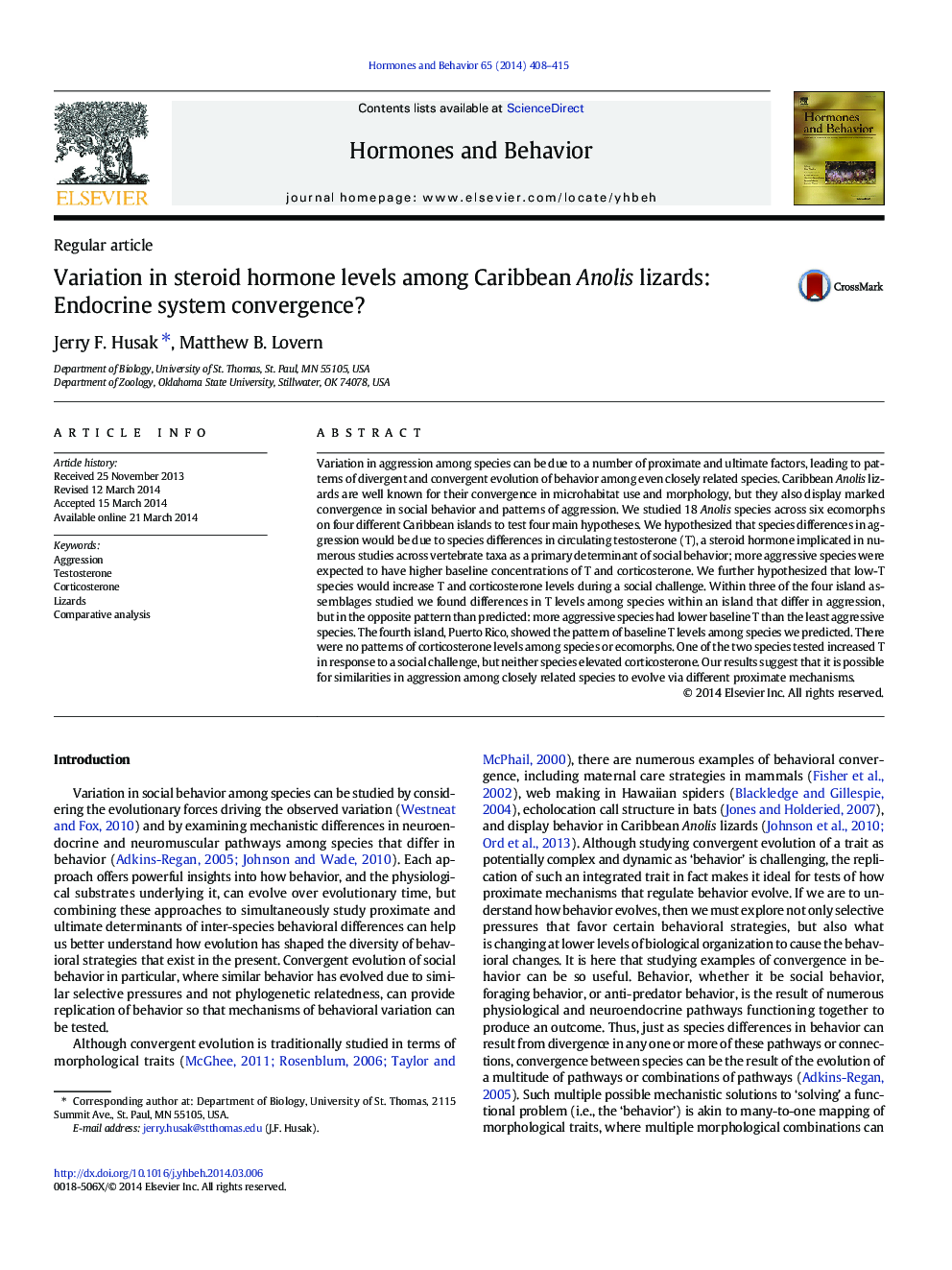| کد مقاله | کد نشریه | سال انتشار | مقاله انگلیسی | نسخه تمام متن |
|---|---|---|---|---|
| 323422 | 540651 | 2014 | 8 صفحه PDF | دانلود رایگان |

• We test whether convergent evolution in aggression is due to convergent evolution in testosterone levels.
• Lizard species with high aggression had low testosterone levels on three of four islands, counter to our prediction.
• The fourth island showed expected pattern of high testosterone–high aggression.
• Corticosterone did not differ among ecomorphs or correlate to testosterone levels.
• Evolutionary changes in aggression may result from divergent changes in proximate mechanisms.
Variation in aggression among species can be due to a number of proximate and ultimate factors, leading to patterns of divergent and convergent evolution of behavior among even closely related species. Caribbean Anolis lizards are well known for their convergence in microhabitat use and morphology, but they also display marked convergence in social behavior and patterns of aggression. We studied 18 Anolis species across six ecomorphs on four different Caribbean islands to test four main hypotheses. We hypothesized that species differences in aggression would be due to species differences in circulating testosterone (T), a steroid hormone implicated in numerous studies across vertebrate taxa as a primary determinant of social behavior; more aggressive species were expected to have higher baseline concentrations of T and corticosterone. We further hypothesized that low-T species would increase T and corticosterone levels during a social challenge. Within three of the four island assemblages studied we found differences in T levels among species within an island that differ in aggression, but in the opposite pattern than predicted: more aggressive species had lower baseline T than the least aggressive species. The fourth island, Puerto Rico, showed the pattern of baseline T levels among species we predicted. There were no patterns of corticosterone levels among species or ecomorphs. One of the two species tested increased T in response to a social challenge, but neither species elevated corticosterone. Our results suggest that it is possible for similarities in aggression among closely related species to evolve via different proximate mechanisms.
Journal: Hormones and Behavior - Volume 65, Issue 4, April 2014, Pages 408–415